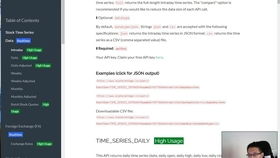Understanding the Basics of Forex Trading

Forex trading, also known as foreign exchange trading, is the process of buying and selling currencies with the aim of making a profit. It’s a global market where traders from all over the world participate, making it one of the largest financial markets in the world. If you’re interested in making money through forex trading, here’s a detailed guide to help you get started.
Choosing a Broker

The first step in forex trading is to choose a broker. A broker is a company that acts as an intermediary between you and the forex market. They provide you with the platform to trade and execute your trades. It’s important to choose a reputable broker that offers competitive spreads, low fees, and a user-friendly trading platform. Some popular brokers include XM, AvaTrade, and Oanda.
Understanding the Market

The forex market operates 24 hours a day, five days a week. It’s divided into major currency pairs, minor currency pairs, and exotic currency pairs. Major currency pairs include EUR/USD, GBP/USD, and AUD/USD, while minor currency pairs include EUR/JPY, GBP/JPY, and USD/CHF. Exotic currency pairs are less commonly traded and include currencies from emerging markets, such as USD/MXN and USD/TRY.
Developing a Trading Plan
A trading plan is a set of rules and guidelines that you follow when trading. It should include your trading goals, risk tolerance, and the strategies you’ll use to enter and exit trades. Your trading plan should also outline the amount of capital you’re willing to risk on each trade and the maximum number of consecutive losing trades you’re willing to accept.
Learning Technical Analysis
Technical analysis is the study of historical market data to identify patterns and trends that can be used to predict future price movements. It involves analyzing charts, indicators, and oscillators to make informed trading decisions. Some popular technical indicators include moving averages, RSI (Relative Strength Index), and MACD (Moving Average Convergence Divergence). It’s important to understand how to use these tools effectively to improve your trading performance.
Understanding Fundamental Analysis
While technical analysis focuses on historical market data, fundamental analysis looks at economic, social, and political factors that can affect currency prices. These factors include interest rates, employment data, inflation rates, and political stability. By understanding the fundamental factors that influence currency prices, you can make more informed trading decisions.
Managing Risk
Risk management is a crucial aspect of forex trading. It involves setting stop-loss orders to limit potential losses and using proper position sizing to ensure that you’re not risking too much capital on a single trade. It’s also important to avoid over-leveraging, as this can lead to significant losses. Some traders use a 1:1 risk-to-reward ratio, meaning they risk the same amount of capital as they aim to gain on each trade.
Developing a Trading Journal
A trading journal is a record of all your trades, including the reason for entering the trade, the entry and exit points, and the outcome. Keeping a trading journal can help you identify patterns in your trading behavior and improve your decision-making process. It’s also a useful tool for reviewing your trading performance and making adjustments to your trading plan.
Continuous Learning and Improvement
The forex market is constantly changing, and it’s important to stay informed about the latest market trends and developments. Continuous learning and improvement are key to becoming a successful forex trader. This includes staying up-to-date with economic news, attending trading workshops, and reading books and articles on trading strategies.
Table: Comparison of Popular Forex Brokers
| Broker | Spreads | Minimum Deposit | Regulation |
|---|---|---|---|
| XM | From 0.9 pips | $5 | CySEC, FCA |
| AvaTrade | From 1.4 pips | $100 | ASIC, FCA |
| Oanda | From 0.8 pips | $0 | CFT |



